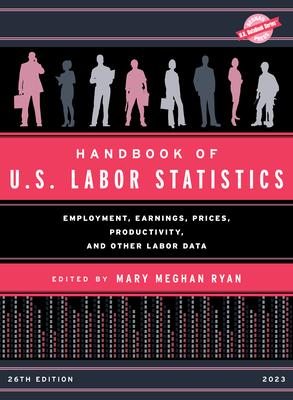"The most authoritative and up-to-date source on United States labor market data available in print. A must-purchase." - Library Journal, Starred Review
The Handbook of U.S. Labor Statistics is recognized as an authoritative resource on the U.S. labor force. It continues and enhances the Bureau of Labor Statistics's (BLS) discontinued publication, Labor Statistics. It allows the user to understand recent developments as well as to compare today's economy with that of the past.
This publication includes several tables throughout the book examining the extensive effect that coronavirus (COVID-19) has had on the labor market since 2020. A chapter titled "The Impact of Coronavirus (COVID-19) on the Labor Force" includes new information on hazard pay, safety measures businesses enforced during the pandemic, vaccine incentives, and compressed work schedules. In addition, there are several other tables within the book exploring its impact on employment, telework, and consumer expenditures.
This edition of Handbook of U.S. Labor Statistics also includes a completely updated chapter on prices and the most current employment projections through 2030.
The Handbook is a comprehensive reference providing an abundance of information on a variety of topics. In addition to providing statistics on employment, unemployment, and prices, it includes information on topics such as:
- Earnings;
- Productivity;
- Consumer expenditures;
- Occupational safety and health;
- Union membership;
- Working poor
- Recent trends in the labor force
- And much more!
Features of the publication:
In addition to over 215 tables that present practical data, the Handbook provides:
- Introductory material for each chapter that contains highlights of salient data and figures that call attention to noteworthy trends in the data
- Notes and definitions, which contain concise descriptions of the data sources, concepts, definitions, and methodology from which the data are derived
- References to more comprehensive reports which provide additional data and more extensive descriptions of estimation methods, sampling, and reliability measures
